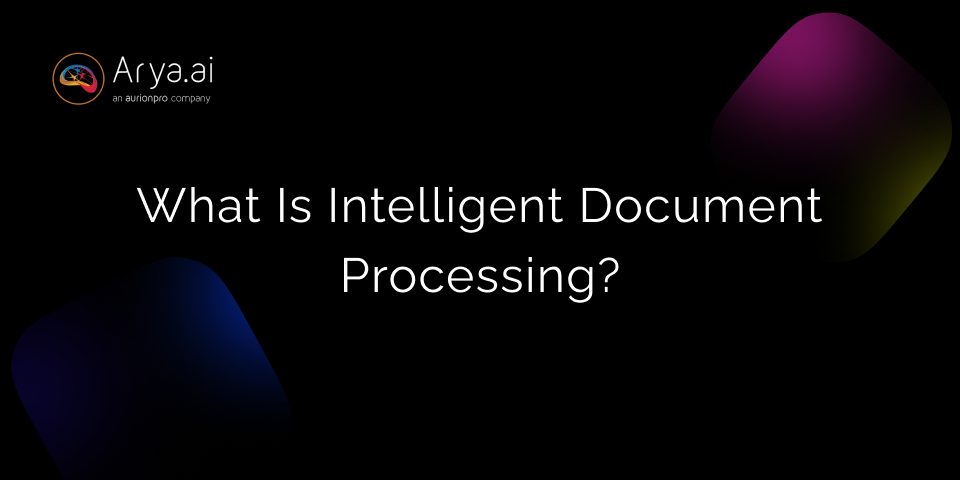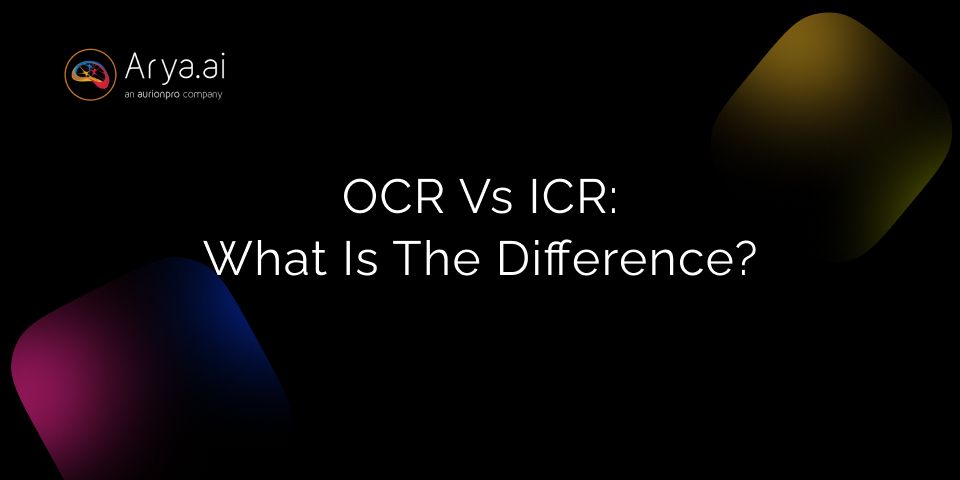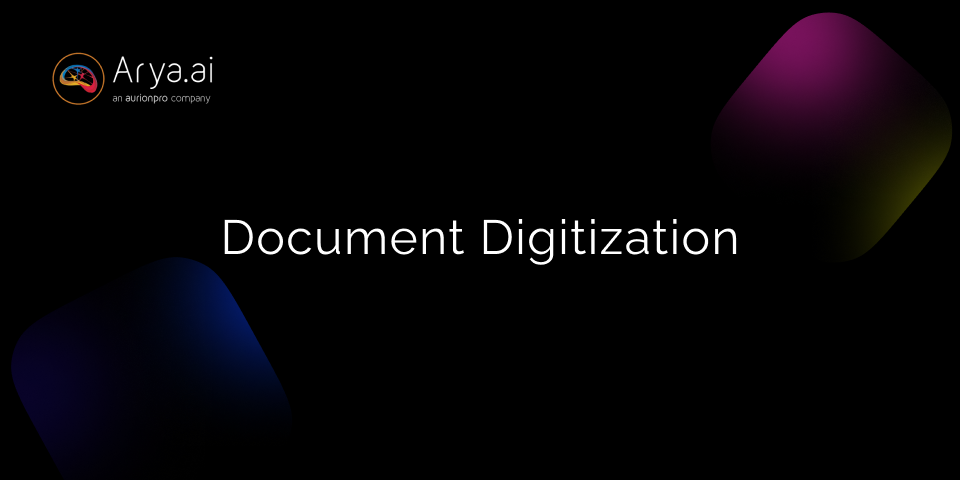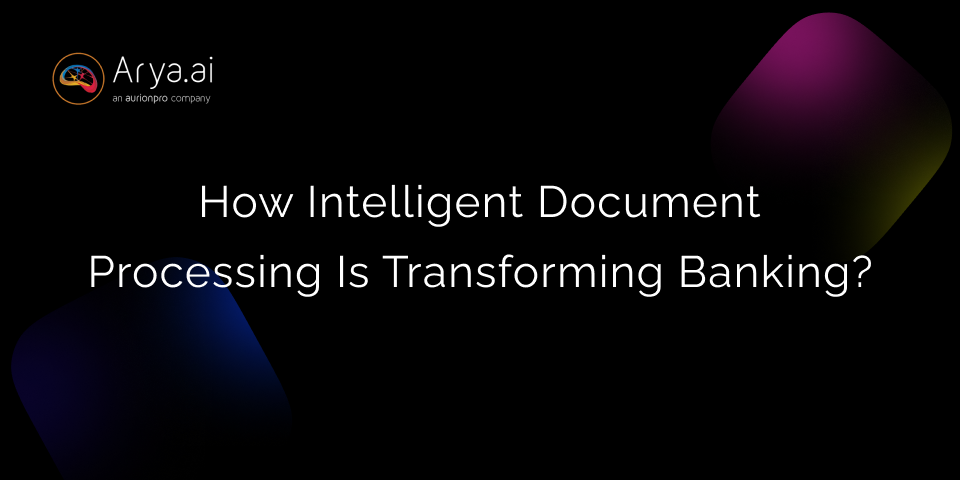The amount of data handled by organisations worldwide has reached a new all-time high, and is becoming increasingly difficult to figure out useful information from noise. This is what Intelligent Document Processing (IDP) aims to solve, or rather, what it already solves since the technology has been around since the early 2000s and is improving rapidly with the latest advancements in AI.
Intelligent Document Processing is now becoming an integral part of many industries such as financial institutions, HR, government agencies, insurance companies and even law firms which have an unprecedented amount of hand-written documents.
To put things into context, businesses collect an exorbitant amount of data—from invoices and receipts to contracts and emails. This data is typically of three types: structured, unstructured, and semi-structured.
This creates a three-headed problem for businesses:
- Volume: The sheer amount of data, be it digital or on paper, can be overwhelming for your employees and your systems. Keeping track of all this becomes a logistical nightmare.
- Inconsistency: While structured data resides in neat tables and organized spreadsheets, semi-structured usually lacks a consistent format and is not easily understood. Unstructured data, like emails, and hand-written documents, requires manual effort to decipher and categorise.
- Bottleneck: Extracting information from these documents relies on slow and error-prone manual data entry, where your employees spend countless hours keying in data.
With the power of advanced AI technologies like Natural Language Processing (NLP) and Machine Learning (ML), IDP understands the context and meaning within these documents, enabling it to not just extract text, but also to classify documents, find key info, and validate its accuracy.
So, what exactly is Intelligent Document Processing, and what are its uses for different industries; let’s find out in this blog.
What is Intelligent Document Processing?
Intelligent Document Processing (IDP) is a process automation technology that converts large data streams into accessible formats by scanning, extracting, categorizing and organizing information from documents. The primary goal of IDP is to extract meaningful info from huge piles of data without human help.
The precursor of Intelligent Document Processing is Optical Character Recognition (OCR), which is often confused by some as having the same capabilities as IDP. However, the whole idea of IDP was to overcome the limitations of the decades-old OCR systems by using advanced technologies.
While IDP uses some form of OCR at the base level to extract text, it goes way beyond it.
What Technologies Power Intelligent Document Processing?
They say that “any sufficiently advanced technology is indistinguishable from magic”, and to an unaware person, Intelligent Document Processing may seem like magic when it comes to automating document processing. IDP is powered by a combination of cutting-edge AI techniques, each having a crucial role in the information extraction process:
Optical Character Recognition (OCR): OCR forms the foundation of Intelligent Document Processing. It converts printed, handwritten or digital text into a machine-readable text format.
- Natural Language Processing (NLP): Once the text is extracted, NLP steps in to understand the meaning and context. It analyzes the language structure, identifies keywords and entities (like names, dates or locations), and even categorizes the document type (invoice, contract, etc.).
- Machine Learning (ML): ML algorithms are what help improve the accuracy of IDP. By feeding the system with large volumes of training data (correctly labelled documents), the ML algorithm learns to identify patterns and recognize different document types and information fields. The more data IDP processes, the smarter and more accurate it becomes.
- Computer Vision (CV): While OCR and NLP handle the textual content, Computer Vision (CV) takes things further. Computer Vision allows intelligent Document Processing to extract information beyond plain text. It can find and process visual elements like tables, logos, handwritten annotations, or even checkboxes on forms. This makes IDP particularly powerful for handling complex documents with various data formats.
In short, Intelligent Document Processing combines OCR with AI technologies like Natural Language Processing, Machine Learning and Computer Vision to automate data processing.
How does Intelligent Data Processing Work?
Intelligent Document Processing works in a series of well-coordinated steps, to transform unstructured data into structured data:
1. Document Ingestion:
The first step is getting your documents into the Intelligent Document Processing software. This can be done in a few ways: uploading scanned documents or digital files, or integrating the IDP software with existing document repositories or email systems. An ideal case would be where the IDP software acts as a central hub where all your documents, both physical or digital, can be fed into the system for processing.
2. Document Classification:
Once ingested, IDP goes to work finding the type of document it's dealing with, whether it is an invoice, a receipt, a contract, or something else entirely. Using a combination of OCR and NLP, IDP can analyze the document structure, keywords, and even layout to accurately categorize the document type. This classification is crucial for extracting the relevant information later.
3. Data Extraction:
With the document type identified, IDP extracts the valuable information you need. This is where the power of AI truly shines. NLP helps Intelligent Document Processing pinpoint specific data fields like invoice numbers, customer names, amounts, or dates. Machine Learning algorithms, trained on vast datasets, further enhance accuracy by recognizing patterns and identifying specific information that is unique to different document types.
4. Data Validation and Verification:
Extracting data is one thing; ensuring its accuracy is another. Intelligent Document Processing often includes data validation and verification checks. This may involve applying business rules, cross-referencing extracted data with existing databases, or even flagging uncertainties for human review.
As much as we want to, no data extraction tool is 100% accurate, however, the more documents that IDP processes, the more accurate it becomes. So if a document is flagged for review, human help is necessary to supervise the learning and accuracy of the model.
5. Data Export and Integration:
The final step is getting the extracted data where it needs to go. Intelligent Document Processing can seamlessly export the structured data into various formats (like CSV or JSON) or integrate it directly with your existing business systems – accounting software, CRM platforms, or Enterprise Resource Planning (ERP) solutions. This streamlines workflows and ensures the extracted information is readily available for further analysis and action.
Benefits of Intelligent Document Processing for Businesses of All Sizes
With all this data, businesses that can make efficient data-driven decisions stand at the top. IDP offers a plethora of advantages that help businesses in different domains:
- Increased Efficiency
Intelligent Document Processing eliminates manual data entry and frees valuable employee time for productive work. Think of your accounts team being able to focus on analyzing financial trends instead of spending hours manually entering invoice data.
With documents classified, information extracted, and data exported seamlessly and within a single IDP system, you’ll get faster processing times, improved collaboration among your employees, and a smoother flow of information across your organization.
- Enhanced Accuracy and Data Quality
Manual data entry is prone to human error of 20 to 30%. Intelligent Document Processing mitigates this by automating data extraction, with an accuracy level of 98%, ensuring the integrity of your data. IDP standardizes data format across all documents, regardless of their source or structure, removing inconsistent data formats often seen in paperwork or various digital documents.
- Better Decision-Making with Actionable Insights
IDP finds valuable information trapped within unstructured documents like emails, contracts, or customer reviews. By analyzing the extracted text, IDP can identify trends, patterns, and insights that would otherwise be missed.
With all the accurate and complete data at your fingertips, IDP helps in data-driven decision-making. You get better visibility into your business operations, making it easier for you to find areas where you can improve and optimize business workflows.
- Scalability and Cost Savings
As your business grows, so will the amount of documents you need to process. With an IDP system in place, you can handle the increasing data without compromising efficiency or accuracy.
Also, with automated document workflow, your human capital will be reduced considerably, not to mention the additional cost savings from potential errors that may have happened from human inputs.
Use Cases for Intelligent Document Processing
Intelligent document processing (IDP) is used across industries, helping finance institutions automate accounts payable functions, processing resumes and employee data in human resources, managing permits and applications in government agencies, processing claims, detecting document fraud, and assessing policies in insurance companies. Law firms can also use IDP to process, archive, and manage legal data.
The following are some practical uses of IDP:
1. Automating Invoice Processing and Accounts Payable Workflows
Accounts payable departments are often pegged down with hundreds and thousands of manual invoice processing. Here’s how IDP automates this:
- Invoices are uploaded or integrated from email systems.
- IDP extracts key information like invoice number, date, vendor details, and line items.
- The extracted data is automatically validated and routed for approval.
- Payments are processed faster, and early payment discounts can be maximized.
Thus IDP saves time and resources and also errors errors and improves cash flow management.
2. Streamlining Customer Onboarding and KYC (Know Your Customer) Processes
New customer onboarding can be a slow and paper-intensive process, making it tiring for both the customer and your employees. But, IDP can make this significantly faster:
- First, the customer applications, ID documents, and proof of address documents get uploaded.
- IDP extracts relevant data like names, addresses, and identification details.
- The information is automatically verified against government databases (KYC compliance).
- Onboarding is expedited, and customer satisfaction is enhanced.
By automating data extraction and verification, IDP ensures a smooth and efficient KYC and customer onboarding experience.
3. Extracting Data from Medical Records and Insurance Claims
The healthcare industry generates vast data within medical records and insurance claims. And all these documents are too important to miss, which is where IDP can help:
- Medical records are scanned or integrated electronically.
- IDP extracts patient demographics, diagnoses, medications, and treatment details.
- Extracted data can be used for billing purposes or to improve patient care.
- Insurance claims are processed faster and more accurately with automatic data extraction.
IDP empowers healthcare providers with better data management, indirectly improving patient care and making billing practices efficient.
4. Simplifying Loan Processing
Loan applications involve a mountain of paperwork. IDP cuts through the clutter:
- Loan applications, tax documents, and bank statements are uploaded electronically.
- IDP extracts income information, asset details, and employment verification.
- The extracted data automatically fills in loan applications, streamlining the process.
- Underwriting decisions are made faster with accurate and readily available data.
IDP accelerates loan processing times, leading to a smoother experience for both lenders and borrowers.
Read now- How lenders can leverage AI-powered document fraud detection systems
5. Efficiency in Legal Document Review and Contract Management:
Law firms and legal departments deal with a constant inflow of contracts and legal documents. IDP brings much-needed efficiency:
- Contracts and legal documents are uploaded or integrated electronically.
- IDP extracts key clauses, dates, parties involved, and critical terms.
- Lawyers can quickly review and analyze the extracted data for faster turnaround times.
- Contract management becomes more efficient with automatic data extraction and organization.
IDP empowers legal institutions to focus on strategic tasks by automating document review and data extraction thereby saving hours of paperwork.
How to Choose Intelligent Document Processing Software for Your Business?
Choosing the best Intelligent Document Processing (IDP) software for your organization involves a few key steps:
1. Analyze Your Document Processing Needs:
Start by understanding the type of data you handle. Do you deal primarily with structured data like spreadsheets or unstructured data like emails and contracts? What's the typical amount of documents you process daily or monthly? Finally, decide on the level of automation you want– full automation or a hybrid approach with human oversight.
2. Identify Ideal Documents for Intelligent Document Processing:
Next, assess which of your data would be best fit for IDP. Here's how to prioritize:
- Focus on documents that take the longest to process manually.
- Target document processing workflows prone to human error during data entry.
- Consider documents containing valuable information within unstructured formats.
3. Evaluate IDP Solutions Based on Your Needs:
Once you understand your requirements, research available IDP solutions. Here are some crucial factors and questions to ponder:
- Seamless integration with your existing business systems (accounting software, CRM) is essential for smooth workflows.
- Choose the IDP solution that is easy to maintain, considering your resources.
- Check for the level of support the IDP software company provides.
- Does the IDP handle all your document types (structured, semi-structured, unstructured)?
- Will the accuracy of the IDP significantly improve your existing error rate?
- Ensure the IDP complies with relevant industry standards and offers strong data security features.
Simplify Document Processing with Arya AI
While accurate and efficient document processing is crucial, businesses also require a high degree of trust in the authenticity of documents they receive. Arya AI offers a robust Document Fraud Detection API specifically designed to address this critical need.
This API leverages cutting-edge deep learning techniques to analyze digital documents and find potential tampering attempts by finding even subtle alterations within documents and protects your institution from financial losses and reputational damage.
Key Takeaways
With a robust Intelligent Document Processing (IDP) system in your organization, you can collect valuable data from your documents with less error, at a reduced cost. Intelligent Document Processing frees your employees from time-consuming data processing and will extract significant data insights for you in simple, accessible formats.
Businesses that embrace such advanced technologies gain a significant edge in the long run. While IDP isn't a magic solution, it's the result of collaboration between experts, tackling real-world problems with cutting-edge technology. As the world becomes increasingly reliant on data, IDP positions you to make the most of every document you handle.
Contact us to know more about how you can leverage our APIs for IDP!





